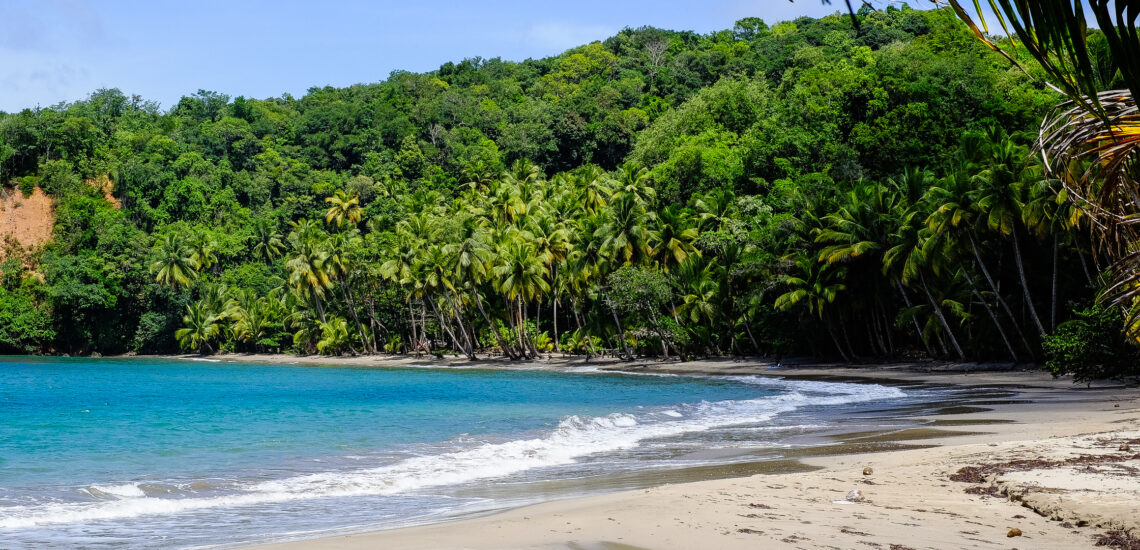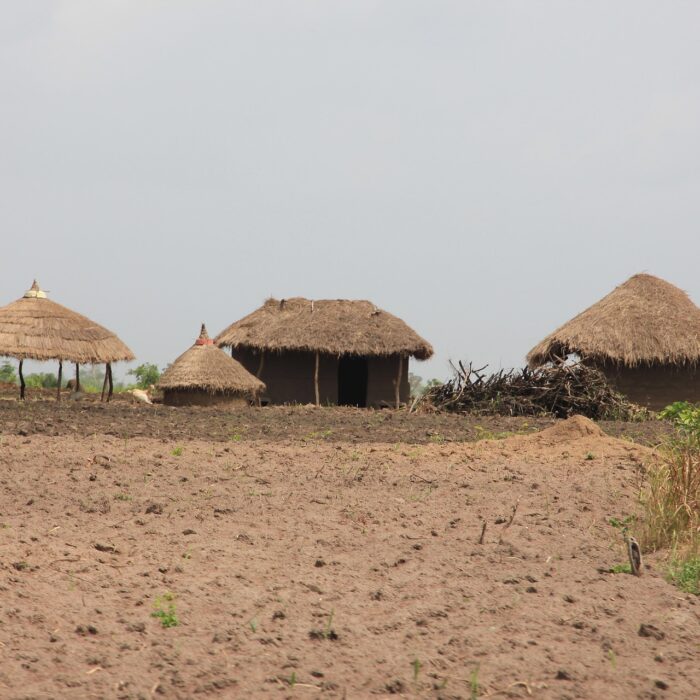Quick facts about Dominica:
- Population: Approximately 72,000 people.
- Capital: Roseau.
- Official Language: English.
- Currency: Eastern Caribbean dollar (XCD).
- Government: Parliamentary democracy, republic.
- Major Religion: Christianity.
- Geography: Dominica is an island country in the Caribbean Sea, located between Guadeloupe and Martinique. It is known for its rugged terrain, lush rainforests, and numerous rivers and waterfalls.
Fact 1: There are as many as 9 volcanic centers in little Dominica
Dominica, known as the “Nature Island of the Caribbean,” boasts nine volcanic centers scattered across its terrain. These centers include Morne aux Diables, Morne Diablotins, Morne Trois Pitons, Morne Watt, Morne Anglais, Morne Plat Pays, and others. While Morne Trois Pitons is recognized as an active volcano and a UNESCO World Heritage Site, not all volcanic centers exhibit current volcanic activity. Nevertheless, these volcanic features contribute to Dominica’s unique topography, providing opportunities for exploring hot springs, geothermal phenomena, and dramatic landscapes. Visitors to Dominica can marvel at the island’s volcanic heritage while enjoying its natural beauty and diverse ecosystems.
Note: If you plan to visit the country, check if you need an International Driver’s License in Dominica to drive.
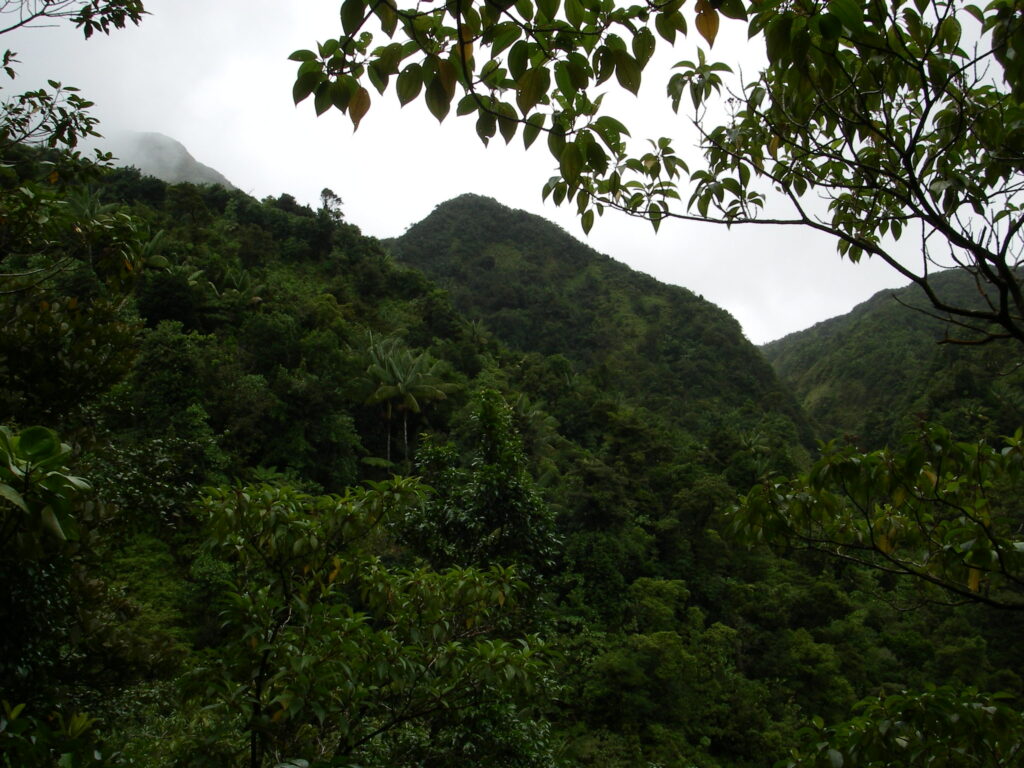
Fact 2: The name Dominica has been around since Columbus
The island of Dominica, located in the Eastern Caribbean, is thought to have been named by Columbus himself during his exploration of the region in the late 15th century. According to historical accounts, Columbus first spotted the island on a Sunday, which led to its name “Dominica” or “Sunday” in Latin. This name has persisted through the centuries and is now the official name of the island nation.
Fact 3: Dominica has very rich flora and fauna
Dominica’s lush and diverse ecosystems support a wealth of plant and animal species, making it a haven for biodiversity. The island’s mountainous terrain, volcanic soil, and abundant rainfall create a variety of habitats, including rainforests, freshwater rivers, coastal mangroves, and coral reefs. Dominica is home to over 1,200 species of flowering plants, including numerous rare and endemic species found nowhere else on Earth. Its dense forests provide habitat for a diverse array of wildlife, including the iconic Dominica parrot, known locally as the Sisserou, as well as agoutis, manicous, and numerous bird species. Offshore, the waters surrounding Dominica teem with marine life, including whales, dolphins, sea turtles, and colorful reef fish.

Fact 4: Dominica has its own endemic bird, which is the national bird
The Imperial Amazon Parrot, also known as the Sisserou Parrot (Amazona imperialis), is a majestic and colorful bird found only on the island of Dominica. With its vibrant green plumage, red markings, and distinctive size, the Sisserou Parrot is a cherished symbol of Dominica’s natural heritage and biodiversity. Due to habitat loss and poaching, the Sisserou Parrot is considered critically endangered, and conservation efforts are underway to protect and preserve this iconic species. Recognizing its significance, the Sisserou Parrot was designated as the national bird of Dominica, representing the island’s unique and rich avian diversity.
Fact 5: Dominica is where sperm whales live all year round
Sperm whales (Physeter macrocephalus) are present in the waters surrounding Dominica throughout the year, making the island a premier destination for whale watching and marine eco-tourism. The deep underwater canyons off Dominica’s coast provide ideal habitat for these magnificent marine mammals, attracting them to the area year-round. While Dominica offers exceptional opportunities to observe sperm whales in their natural habitat, they are also found in other regions of the world, including parts of the Atlantic, Pacific, and Indian Oceans. Sperm whales are known to undertake long migrations and can be found in various oceanic regions depending on factors such as food availability and breeding patterns.
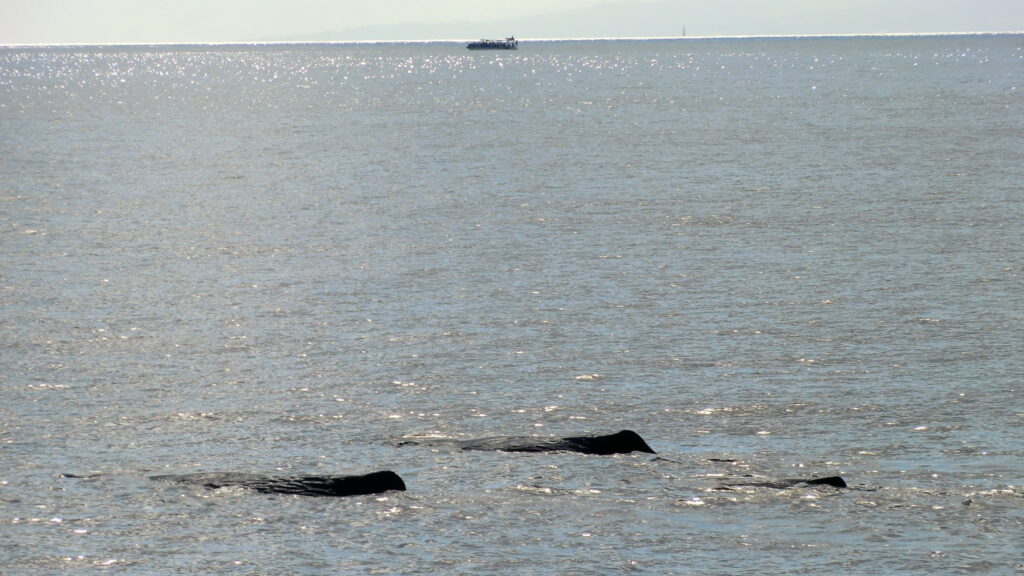
Fact 6: Dominica is a great place for hiking
Dominica’s rugged terrain, lush rainforests, and volcanic landscapes make it an ideal destination for hiking and adventure seekers. The island boasts a network of well-maintained hiking trails that cater to all levels of experience, from leisurely nature walks to challenging treks. Hikers can explore dense rainforests, ascend volcanic peaks, and discover hidden waterfalls and natural hot springs along the way. Popular hiking destinations include the Morne Trois Pitons National Park, home to the UNESCO-listed Boiling Lake and Trafalgar Falls, as well as the Waitukubuli National Trail, the Caribbean’s longest hiking trail spanning 115 miles from north to south.
Fact 7: Most of Dominica is national parks
Dominica’s commitment to conservation is evident in its establishment of numerous national parks and protected areas, which encompass diverse ecosystems and pristine landscapes. These protected areas cover a large percentage of the island’s total land area, making Dominica one of the most environmentally preserved countries in the Caribbean. Notable national parks include Morne Trois Pitons National Park, a UNESCO World Heritage Site known for its volcanic peaks, boiling lake, and lush rainforests, as well as Cabrits National Park, home to historic forts and diverse marine life. Other protected areas include forest reserves, marine reserves, and wildlife sanctuaries, all of which contribute to the preservation of Dominica’s rich biodiversity and natural heritage.
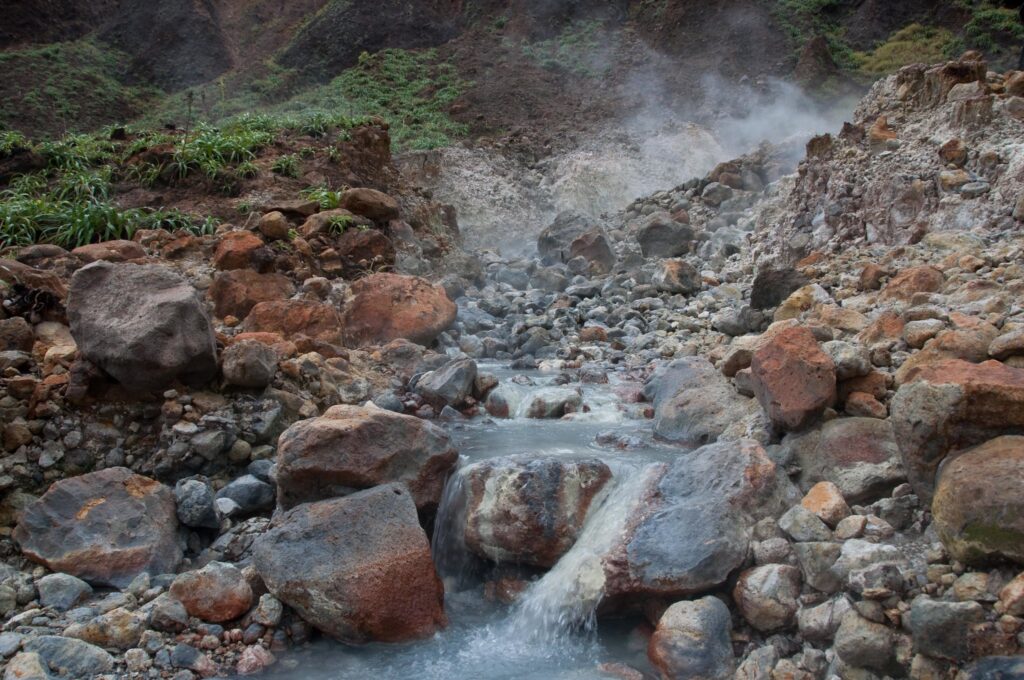
Fact 8: Dominica has a bay with thermal springs
Champagne Reef, located near the village of Soufrière on Dominica’s southwest coast, is renowned for its bubbling thermal springs that release warm, carbonated water into the sea. This phenomenon creates a sensation similar to champagne bubbles, giving the reef its name. Snorkelers and divers can explore the shallow waters of Champagne Reef, where they’ll encounter vibrant coral formations, colorful fish, and other marine life amidst the warm, effervescent bubbles rising from the seafloor. The combination of underwater hot springs and abundant marine biodiversity makes Champagne Reef a popular destination for underwater enthusiasts and nature lovers visiting Dominica.
Fact 9: Due to its volcanic origin, Dominica has many black sand beaches
These beaches derive their dark color from volcanic minerals and lava deposits. Dominica’s beaches vary in color and composition, black sand beaches can be found in locations such as Scotts Head, Soufrière, and Pointe Baptiste. Visitors to these beaches can admire the contrast between the dark sands and the turquoise waters of the Caribbean Sea, creating striking and picturesque coastal scenery. In addition to their aesthetic appeal, black sand beaches offer opportunities for beachcombing, swimming, and enjoying the island’s natural beauty.

Fact 10: Dominica has preserved indigenous people
The indigenous Carib people, also known as Kalinago, have inhabited Dominica for centuries and continue to maintain their cultural traditions and heritage on the island. Despite the impact of European colonization and centuries of societal changes, the Kalinago people have persevered and preserved aspects of their language, customs, arts, and traditional way of life. The Kalinago Territory, located on the eastern coast of Dominica, is a designated reservation where many members of the Carib community reside. Here, visitors can learn about the history and culture of the Kalinago people through guided tours, cultural demonstrations, and interactions with community members.

Published April 07, 2024 • 6m to read

